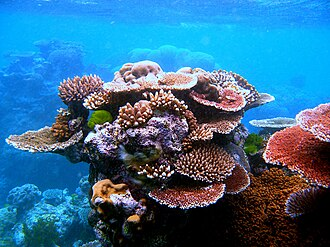
Coral reefs are underwater ecosystems formed by colonies of tiny marine animals called coral polyps, which build hard, stony skeletons of calcium carbonate. These reefs are crucial habitats for a vast array of marine life and play a vital role in coastal protection and human well-being.
Formation and Structure:
- Coral reefs are created by the slow accumulation of calcium carbonate skeletons from coral polyps.
- Stony corals are the main builders of these reefs, with colonies composed of thousands of individual polyps.
- These reefs can grow into large underwater structures, some even forming islands.
- Reefs are typically found in shallow, warm, tropical and subtropical waters.
Importance:
- Biodiversity: Coral reefs are among the most diverse ecosystems on Earth, supporting a wide range of fish, corals, and other marine life.
- Coastal Protection: Reefs act as natural barriers, protecting coastlines from wave action, erosion, and storms.
- Human Benefits: Coral reefs provide food and jobs for millions of people, and they contribute to tourism and other industries.
- Ecological Significance: Reefs provide habitat and nursery grounds for many marine species, including fish, sea turtles, and other invertebrates.
Distribution:
- Coral reefs are found in more than 100 countries and territories worldwide.
- Some of the most prominent coral reef regions include the Great Barrier Reef in Australia, the Coral Triangle in Southeast Asia, and the Caribbean Sea.
Threats:
- Coral bleaching, where coral expel the symbiotic algae that provide them with nutrients, is another significant threat, often linked to rising ocean temperatures.
- Coral reefs face numerous threats, including climate change, pollution, overfishing, and destructive fishing practices.
- Ocean acidification, a consequence of rising carbon dioxide levels in the atmosphere, is a major threat to coral health, as it hinders their ability to build skeletons.















